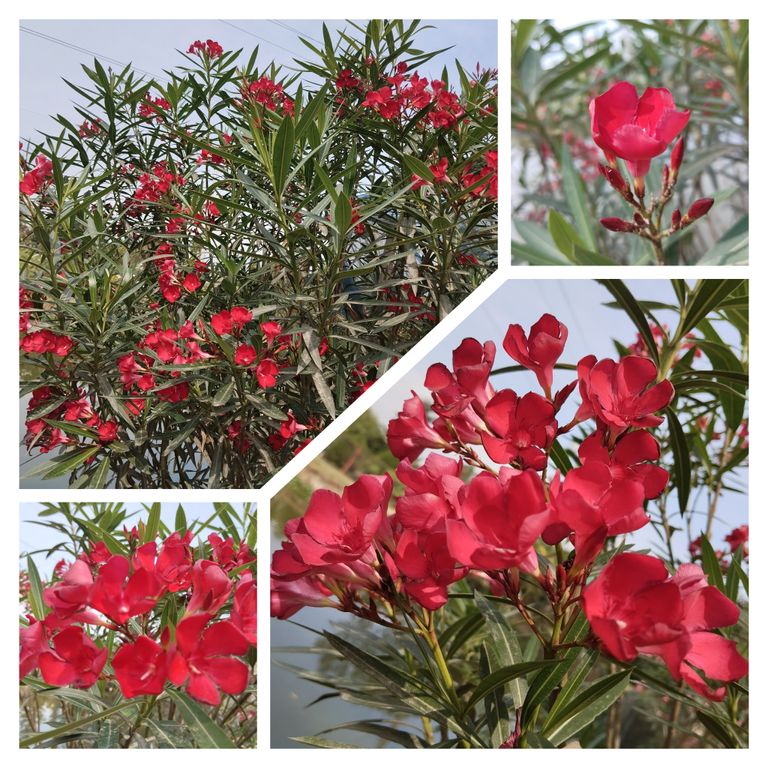
The Enchanting Beauty of Rakta Karabi Red Oleander Flower.
Nature has blessed the world with countless mesmerizing flowers, each carrying its own significance, beauty, and charm. Among them, Rakta Karabi, also known as Red Oleander, stands out with its striking appearance, cultural importance, and medicinal properties. This alluring flower has captured the hearts of poets, nature lovers, and botanists alike for centuries. In this blog, we delve into the enchanting beauty of Rakta Karabi, exploring its aesthetics, symbolism, and uses.
The Vibrant Aesthetics of Rakta Karabi
Rakta Karabi (Nerium oleander) is an evergreen shrub that produces clusters of deep red or bright pink blossoms. The flowers, often five-petaled and star-shaped, radiate a bold and passionate appeal. Their vibrant hues contrast beautifully against the dark green, elongated leaves, creating a stunning visual treat in gardens and wild landscapes.
What makes Rakta Karabi even more captivating is its ability to bloom throughout the year, ensuring a continuous splash of color in its surroundings. Whether it adorns home gardens, parks, or roadsides, this flower effortlessly enhances the aesthetic appeal of any space.
Symbolism and Cultural Significance
In many cultures, Rakta Karabi symbolizes resilience, strength, and passion. Its deep red petals are often associated with love and devotion, making it a flower of intense emotions. In literary works, especially in Bengali literature, the Rakta Karabi flower has been used as a metaphor for struggles, sacrifice, and inner beauty.
Famous poet and Nobel laureate Rabindranath Tagore immortalized the flower in his play Raktakarabi, where it represented human resilience against oppression. This literary significance has further enhanced the flower’s reputation, making it a symbol of resistance and hope.
Medicinal and Practical Uses
Beyond its beauty, Rakta Karabi has long been used in traditional medicine. Despite being toxic in large amounts, controlled and expert use of the plant’s extracts has been known to offer medicinal benefits. Some of its known uses include:
Cardiac Treatment: Certain compounds in the plant have been used to regulate heart conditions.
Skin Treatments: Extracts from the plant have been used to treat skin ailments such as eczema and rashes.
Anti-inflammatory Properties: Some traditional medicine practices use oleander extracts to reduce swelling and inflammation.
However, it is important to handle this plant with caution, as all parts of it contain toxic elements that can be harmful if ingested improperly.
A Timeless Floral Beauty
Rakta Karabi is more than just a flower; it is a symbol of passion, endurance, and poetic inspiration. Whether appreciated for its dazzling beauty, its cultural depth, or its medicinal applications, this flower continues to captivate hearts across generations. The Red Oleander, with its vibrant blossoms and deep-rooted significance, remains a testament to nature’s artistic brilliance.
If you ever come across a Rakta Karabi flower in full bloom, take a moment to admire its fiery elegance—it is nature’s way of reminding us of beauty, strength, and resilience.
I've written a blog post about the beauty and significance of the Rakta Karabi (Red Oleander) flower. Let me know if you'd like any modifications or additions.
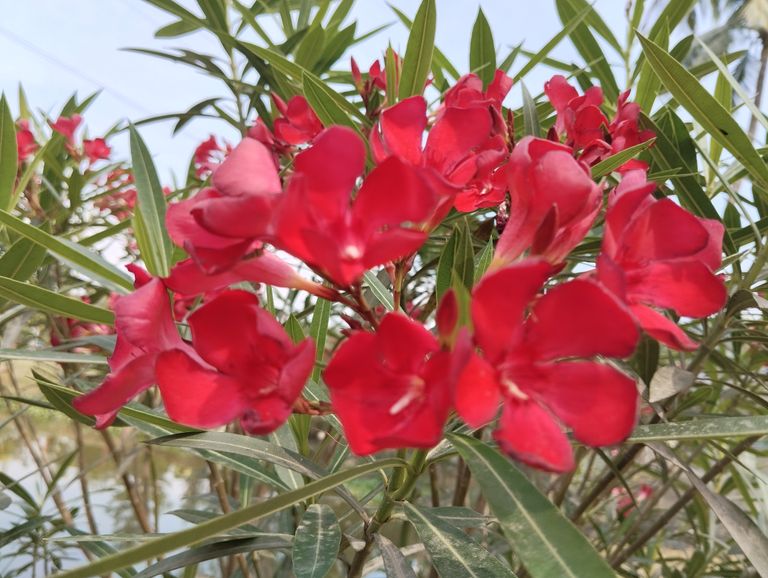
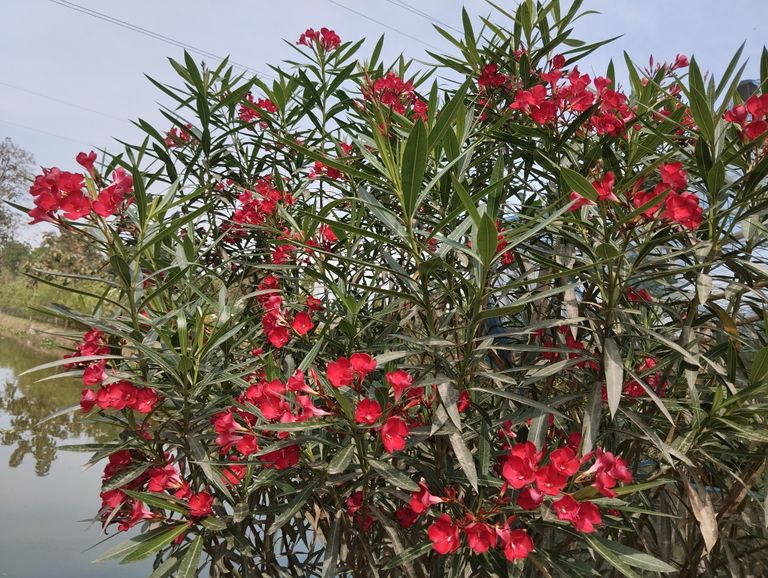
The Incredible Benefits of Rakta Karabi (Nerium Oleander) Flowers
Rakta Karabi, also known as Nerium Oleander, is a beautiful yet potent flowering plant known for its medicinal properties. While it is admired for its vibrant blossoms, the plant contains powerful compounds that have been used in traditional medicine for centuries. Despite its toxicity, when used correctly, Rakta Karabi offers various health and therapeutic benefits. In this article, we explore the advantages of this unique plant and how it has been utilized in herbal remedies.
- Medicinal Uses in Ayurveda and Traditional Medicine
Rakta Karabi has been a part of Ayurvedic and traditional medicinal systems for ages. It is mainly used to treat various ailments, thanks to its antibacterial, antifungal, and anti-inflammatory properties. Here are some of the primary medicinal benefits:
Skin Diseases: The extracts of the plant are used to treat skin infections, eczema, and rashes. When properly diluted, its paste is applied to affected areas for relief.
Joint Pain Relief: Its anti-inflammatory properties make it beneficial for people suffering from arthritis and joint pain.
Cardiac Health: Some controlled extracts are used in Ayurvedic medicines to support heart health, but they must be administered under expert supervision due to potential toxicity.
Wound Healing: Traditional medicine practitioners use its paste for healing wounds and reducing swelling.
- Anti-Cancer Properties
Recent studies suggest that certain compounds in Nerium Oleander have anti-cancer properties. Some extracts are being studied for their potential to suppress tumor growth and promote apoptosis (natural cell death) in cancerous cells. However, more research is needed before it becomes a mainstream treatment.
- Antimicrobial and Antifungal Effects
The leaves and flowers of Rakta Karabi have strong antimicrobial properties. Extracts from the plant are known to inhibit the growth of harmful bacteria and fungi. This makes it an effective natural remedy for various infections.
- Enhancing Hair Health
When properly processed, Rakta Karabi extracts can be used in herbal hair oils to promote scalp health and reduce dandruff. It is believed to strengthen hair roots and prevent hair fall when applied in a controlled manner.
- Pest and Insect Control
Due to its natural toxicity, Rakta Karabi is used as an organic insecticide. Farmers sometimes use its extract to keep pests away from crops, making it an eco-friendly alternative to chemical pesticides.
- Spiritual and Cultural Significance
Apart from its medicinal and practical benefits, Rakta Karabi holds spiritual significance in various cultures. It is often used in religious ceremonies and temple offerings in many parts of India.
Precautions and Safety Measures
While Rakta Karabi offers numerous benefits, it is essential to handle it with caution. The plant contains toxic compounds that can be harmful if ingested or improperly applied. Here are some safety tips:
Never consume any part of the plant without expert guidance.
Keep it away from pets and children.
Always dilute extracts before topical use.
Consult an herbal expert before using it for medicinal purposes.
Conclusion
Rakta Karabi is a powerful plant with incredible medicinal properties. When used correctly, it provides multiple health benefits, from treating skin diseases to potential cancer-fighting properties. However, due to its toxicity, proper precautions must be taken. Whether used in Ayurveda, pest control, or spiritual practices, this vibrant plant continues to be a valuable asset in various fields. If you are interested in utilizing its benefits, always consult a professional for safe usage.
Would you like to learn more about herbal remedies and their benefits? Stay tuned for more insights into nature’s incredible healing power!
I've written a detailed blog on the benefits of Rakta Karabi (Nerium Oleander) flowers, covering their medicinal uses, potential health benefits, and precautions. Let me know if you'd like any modifications or additions.

The Incredible Benefits of Rakta Karabi (Nerium Oleander) Flowers
Rakta Karabi, also known as Nerium Oleander, is a beautiful yet potent flowering plant known for its medicinal properties. While it is admired for its vibrant blossoms, the plant contains powerful compounds that have been used in traditional medicine for centuries. Despite its toxicity, when used correctly, Rakta Karabi offers various health and therapeutic benefits. In this article, we explore the advantages of this unique plant and how it has been utilized in herbal remedies.
- Medicinal Uses in Ayurveda and Traditional Medicine
Rakta Karabi has been a part of Ayurvedic and traditional medicinal systems for ages. It is mainly used to treat various ailments, thanks to its antibacterial, antifungal, and anti-inflammatory properties. Here are some of the primary medicinal benefits:
Skin Diseases: The extracts of the plant are used to treat skin infections, eczema, and rashes. When properly diluted, its paste is applied to affected areas for relief.
Joint Pain Relief: Its anti-inflammatory properties make it beneficial for people suffering from arthritis and joint pain.
Cardiac Health: Some controlled extracts are used in Ayurvedic medicines to support heart health, but they must be administered under expert supervision due to potential toxicity.
Wound Healing: Traditional medicine practitioners use its paste for healing wounds and reducing swelling.
- Anti-Cancer Properties
Recent studies suggest that certain compounds in Nerium Oleander have anti-cancer properties. Some extracts are being studied for their potential to suppress tumor growth and promote apoptosis (natural cell death) in cancerous cells. However, more research is needed before it becomes a mainstream treatment.
- Antimicrobial and Antifungal Effects
The leaves and flowers of Rakta Karabi have strong antimicrobial properties. Extracts from the plant are known to inhibit the growth of harmful bacteria and fungi. This makes it an effective natural remedy for various infections.
- Enhancing Hair Health
When properly processed, Rakta Karabi extracts can be used in herbal hair oils to promote scalp health and reduce dandruff. It is believed to strengthen hair roots and prevent hair fall when applied in a controlled manner.
- Pest and Insect Control
Due to its natural toxicity, Rakta Karabi is used as an organic insecticide. Farmers sometimes use its extract to keep pests away from crops, making it an eco-friendly alternative to chemical pesticides.
- Spiritual and Cultural Significance
Apart from its medicinal and practical benefits, Rakta Karabi holds spiritual significance in various cultures. It is often used in religious ceremonies and temple offerings in many parts of India.
Precautions and Safety Measures
While Rakta Karabi offers numerous benefits, it is essential to handle it with caution. The plant contains toxic compounds that can be harmful if ingested or improperly applied. Here are some safety tips:
Never consume any part of the plant without expert guidance.
Keep it away from pets and children.
Always dilute extracts before topical use.
Consult an herbal expert before using it for medicinal purposes.
Conclusion
Rakta Karabi is a powerful plant with incredible medicinal properties. When used correctly, it provides multiple health benefits, from treating skin diseases to potential cancer-fighting properties. However, due to its toxicity, proper precautions must be taken. Whether used in Ayurveda, pest control, or spiritual practices, this vibrant plant continues to be a valuable asset in various fields. If you are interested in utilizing its benefits, always consult a professional for safe usage.
Would you like to learn more about herbal remedies and their benefits? Stay tuned for more insights into nature’s incredible healing power!
I've written a detailed blog on the benefits of Rakta Karabi (Nerium Oleander) flowers, covering their medicinal uses, potential health benefits, and precautions. Let me know if you'd like any modifications or additions.
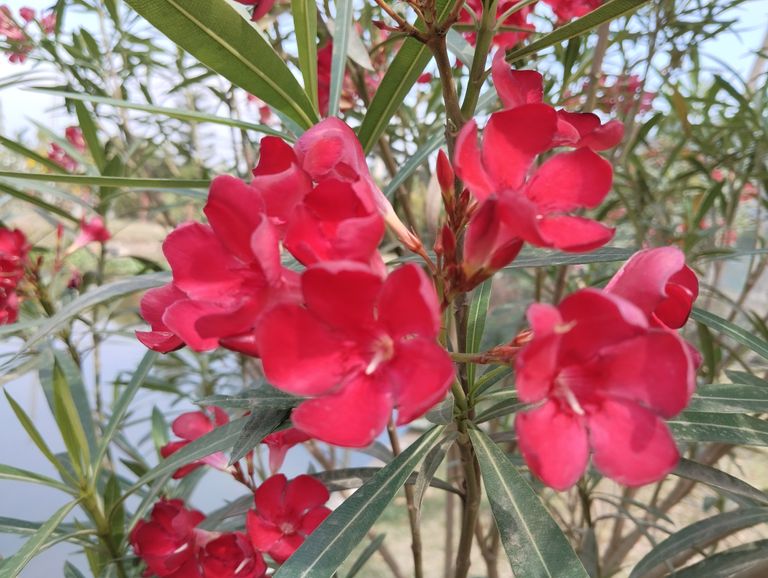
The Incredible Benefits of Rakta Karabi (Nerium Oleander) Flowers
Rakta Karabi, also known as Nerium Oleander, is a beautiful yet potent flowering plant known for its medicinal properties. While it is admired for its vibrant blossoms, the plant contains powerful compounds that have been used in traditional medicine for centuries. Despite its toxicity, when used correctly, Rakta Karabi offers various health and therapeutic benefits. In this article, we explore the advantages of this unique plant and how it has been utilized in herbal remedies.
- Medicinal Uses in Ayurveda and Traditional Medicine
Rakta Karabi has been a part of Ayurvedic and traditional medicinal systems for ages. It is mainly used to treat various ailments, thanks to its antibacterial, antifungal, and anti-inflammatory properties. Here are some of the primary medicinal benefits:
Skin Diseases: The extracts of the plant are used to treat skin infections, eczema, and rashes. When properly diluted, its paste is applied to affected areas for relief.
Joint Pain Relief: Its anti-inflammatory properties make it beneficial for people suffering from arthritis and joint pain.
Cardiac Health: Some controlled extracts are used in Ayurvedic medicines to support heart health, but they must be administered under expert supervision due to potential toxicity.
Wound Healing: Traditional medicine practitioners use its paste for healing wounds and reducing swelling.
- Anti-Cancer Properties
Recent studies suggest that certain compounds in Nerium Oleander have anti-cancer properties. Some extracts are being studied for their potential to suppress tumor growth and promote apoptosis (natural cell death) in cancerous cells. However, more research is needed before it becomes a mainstream treatment.
- Antimicrobial and Antifungal Effects
The leaves and flowers of Rakta Karabi have strong antimicrobial properties. Extracts from the plant are known to inhibit the growth of harmful bacteria and fungi. This makes it an effective natural remedy for various infections.
- Enhancing Hair Health
When properly processed, Rakta Karabi extracts can be used in herbal hair oils to promote scalp health and reduce dandruff. It is believed to strengthen hair roots and prevent hair fall when applied in a controlled manner.
- Pest and Insect Control
Due to its natural toxicity, Rakta Karabi is used as an organic insecticide. Farmers sometimes use its extract to keep pests away from crops, making it an eco-friendly alternative to chemical pesticides.
- Spiritual and Cultural Significance
Apart from its medicinal and practical benefits, Rakta Karabi holds spiritual significance in various cultures. It is often used in religious ceremonies and temple offerings in many parts of India.
Precautions and Safety Measures
While Rakta Karabi offers numerous benefits, it is essential to handle it with caution. The plant contains toxic compounds that can be harmful if ingested or improperly applied. Here are some safety tips:
Never consume any part of the plant without expert guidance.
Keep it away from pets and children.
Always dilute extracts before topical use.
Consult an herbal expert before using it for medicinal purposes.
Conclusion
Rakta Karabi is a powerful plant with incredible medicinal properties. When used correctly, it provides multiple health benefits, from treating skin diseases to potential cancer-fighting properties. However, due to its toxicity, proper precautions must be taken. Whether used in Ayurveda, pest control, or spiritual practices, this vibrant plant continues to be a valuable asset in various fields. If you are interested in utilizing its benefits, always consult a professional for safe usage.
Would you like to learn more about herbal remedies and their benefits? Stay tuned for more insights into nature’s incredible healing power!
I've written a detailed blog on the benefits of Rakta Karabi (Nerium Oleander) flowers, covering their medicinal uses, potential health benefits, and precautions. Let me know if you'd like any modifications or additions.
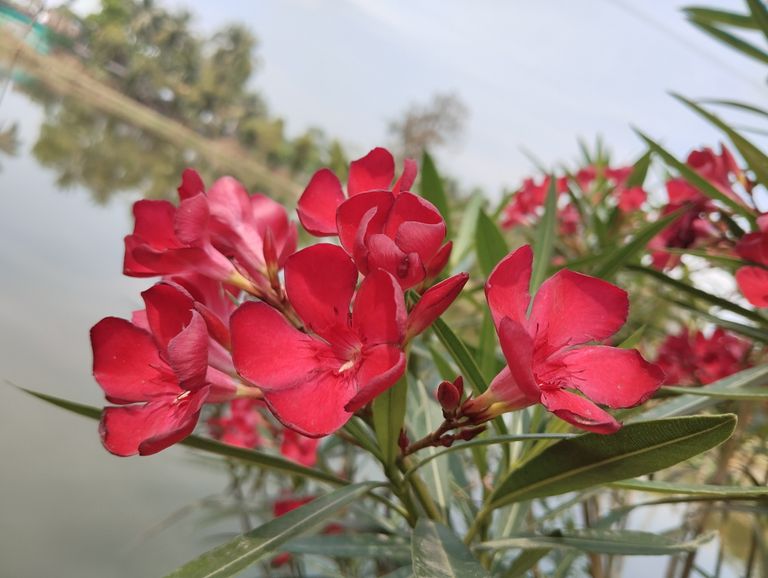
The Incredible Benefits of Rakta Karabi (Nerium Oleander) Flowers
Rakta Karabi, also known as Nerium Oleander, is a beautiful yet potent flowering plant known for its medicinal properties. While it is admired for its vibrant blossoms, the plant contains powerful compounds that have been used in traditional medicine for centuries. Despite its toxicity, when used correctly, Rakta Karabi offers various health and therapeutic benefits. In this article, we explore the advantages of this unique plant and how it has been utilized in herbal remedies.
- Medicinal Uses in Ayurveda and Traditional Medicine
Rakta Karabi has been a part of Ayurvedic and traditional medicinal systems for ages. It is mainly used to treat various ailments, thanks to its antibacterial, antifungal, and anti-inflammatory properties. Here are some of the primary medicinal benefits:
Skin Diseases: The extracts of the plant are used to treat skin infections, eczema, and rashes. When properly diluted, its paste is applied to affected areas for relief.
Joint Pain Relief: Its anti-inflammatory properties make it beneficial for people suffering from arthritis and joint pain.
Cardiac Health: Some controlled extracts are used in Ayurvedic medicines to support heart health, but they must be administered under expert supervision due to potential toxicity.
Wound Healing: Traditional medicine practitioners use its paste for healing wounds and reducing swelling.
- Anti-Cancer Properties
Recent studies suggest that certain compounds in Nerium Oleander have anti-cancer properties. Some extracts are being studied for their potential to suppress tumor growth and promote apoptosis (natural cell death) in cancerous cells. However, more research is needed before it becomes a mainstream treatment.
- Antimicrobial and Antifungal Effects
The leaves and flowers of Rakta Karabi have strong antimicrobial properties. Extracts from the plant are known to inhibit the growth of harmful bacteria and fungi. This makes it an effective natural remedy for various infections.
- Enhancing Hair Health
When properly processed, Rakta Karabi extracts can be used in herbal hair oils to promote scalp health and reduce dandruff. It is believed to strengthen hair roots and prevent hair fall when applied in a controlled manner.
- Pest and Insect Control
Due to its natural toxicity, Rakta Karabi is used as an organic insecticide. Farmers sometimes use its extract to keep pests away from crops, making it an eco-friendly alternative to chemical pesticides.
- Spiritual and Cultural Significance
Apart from its medicinal and practical benefits, Rakta Karabi holds spiritual significance in various cultures. It is often used in religious ceremonies and temple offerings in many parts of India.